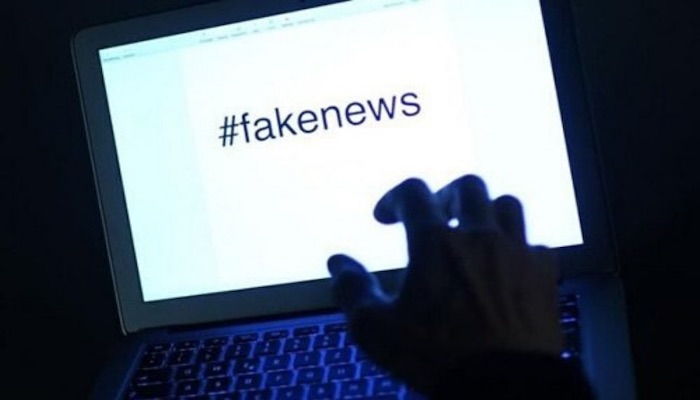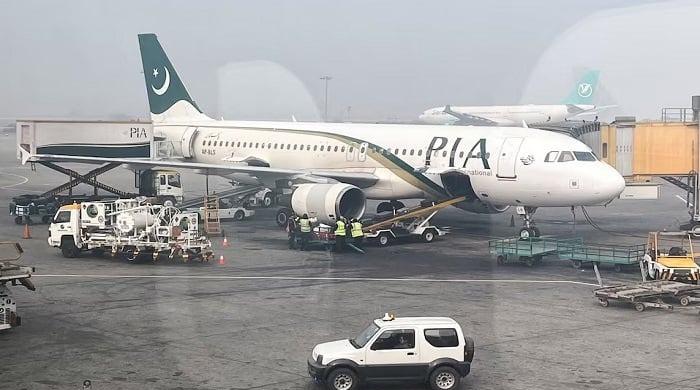Combating misinformation in the digital age in Pakistan
With increased use of social media platforms like Twitter and WhatsApp, Pakistan struggles to navigate its way around misinformation
May 28, 2021

The COVID-19 pandemic has encouraged more people to turn to social media for information, but one may have to navigate around quite a bit of misinformation too.
There have been significant surges in the use of platforms like Twitter, WhatsApp, Zoom and Facebook.
In an analysis of data from February 26 to April 9, 2020, a report by Dawn suggested a 22.84% increase in desktop usage of Twitter in Pakistan. This is the initial period of the pandemic.
Twitter has attempted to reduce the instances of widespread sharing of disinformation with policies like the ‘COVID-19 misleading information policy’. But fake news still does often go undetected and accurate news posts are removed.
Read about India's 15-year information warfare operation to internationally malign Pakistan
Back in January 2020, President of Pakistan, Dr Arif Alvi, wrote a piece on the dangers that ‘fake news’ poses to Pakistan, stating: “Television news is married, some may dare to call it a 'marriage made in hell', to the concept of ‘breaking news’. There is a race in the market of who-gets-what first. We do realise that the more shocking this 'first' is, the better and it provides a competitive edge.”
He continued, “my serious concern is that we should not be breaking people to create breaking news.”
This is true even of news which is not disinformation. There seems to also be a tendency on Twitter to share graphic images of crimes, with the intention of catching the criminal and warning others of their behaviour.
But, I wonder how many times the victims found alongside the criminals in those images have consented to it being shared, or did the sharers consider the long-term implications of the use of those images.
In terms of misinformation, news outlets and journalists with established reputations can also write sensationalist headlines and these are often shared hundreds or thousands of times on social media.
It is also a threat to Pakistan's international reputation when deceptive headlines are shared.
In an investigation undertaken by the EU DisinfoLab, it was discovered that a disinformation operation was created to serve the interests of India internationally but also, as the report states, to produce “content to undermine – primarily – Pakistan.”
Read more: Indian media ridiculed widely for outlandish stories about 'civil war' in Karachi
The ‘Indian Chronicles’, the name given to the operation, utilised fake media, NGOs and even hijacked peoples’ identities to spread “negative content” about Pakistan.
Perhaps the most shocking tactic was the use of the identity of Louis B. Sohn, an acclaimed American human rights lawyer.
Despite having passed away in 2006, his attendance was registered at an event in 2011 organised by ‘Friends of Gilgit-Baltistan’ which was created by the Indian Chronicles to organise events in the European Parliament.
It is important to note that the operation does not mean that Pakistan is perfect and that all issues relating to Pakistan are ‘fake news’.
What it does mean is that those behind the Indian Chronicles are clearly not concerned about the state of minority rights in Pakistan, for example, they merely want to discredit Pakistan internationally.
This has the effect of potentially delegitimising the very organisations dedicated to the improvement of minority rights in Pakistan now that non-accredited NGOs, like the European Organisation for Pakistani Minorities (EOPM), have been openly associated with the Srivastava group.
In the UK, the Independent Press Standards Organisation (IPSO) found that the Mail Online breached a clause of Editors’ Code of Practice in an article from June 2020, with the headline: “Pakistan was the origin for HALF of Britain's imported coronavirus cases - amid calls for tougher quarantine checks from 'high-risk' countries.”
A point was made by the complainant to the watchdog that the headline was misleading in implying that it referred to the time of the pandemic as a whole, as opposed to a specific period in June 2020 which the article goes on to explain.
Headlines are often eye-grabbing and emotive, but this cannot be at the expense of the argument within the larger article. This headline was not only misleading but could easily be met with an increase in a xenophobic backlash against the Pakistani community in the UK.
Statistics, such as those presented by Hope Not Hate, have shown that, when a member of an ethnic or religious minority community is alleged to have committed a crime or caused suffering, there are increased instances of hate crime against that community. Thus, misleading headlines have the power to influence public opinion and function as the fuel of bigots.
When news articles such as this are put on Twitter, a platform of few words, many retweet it having only read the headline. Regardless of the full content of the article, it can easily become a hot item for trolls and keyboard-racists who merely want to spread hatred regardless of the facts.
This is why Twitter now encourages users to read the article before retweeting it.
The implications of misleading news also extend to matters of life and death. The UK’s South Asian community had been targeted with misinformation, especially via WhatsApp, regarding the contents and safety of the vaccines against COVID-19. It was thus no surprise that there were more negative attitudes towards having the vaccine among the Pakistani community.
The connectivity of the world is a beautiful thing, it cannot be denied. But we each have a role to play in tackling often accusatory and harmfully misleading news, whether as journalists at the creative end or as social media users at the receiving end.
Hunter is a researcher and analyst. She tweets @MaryFloraHunter









